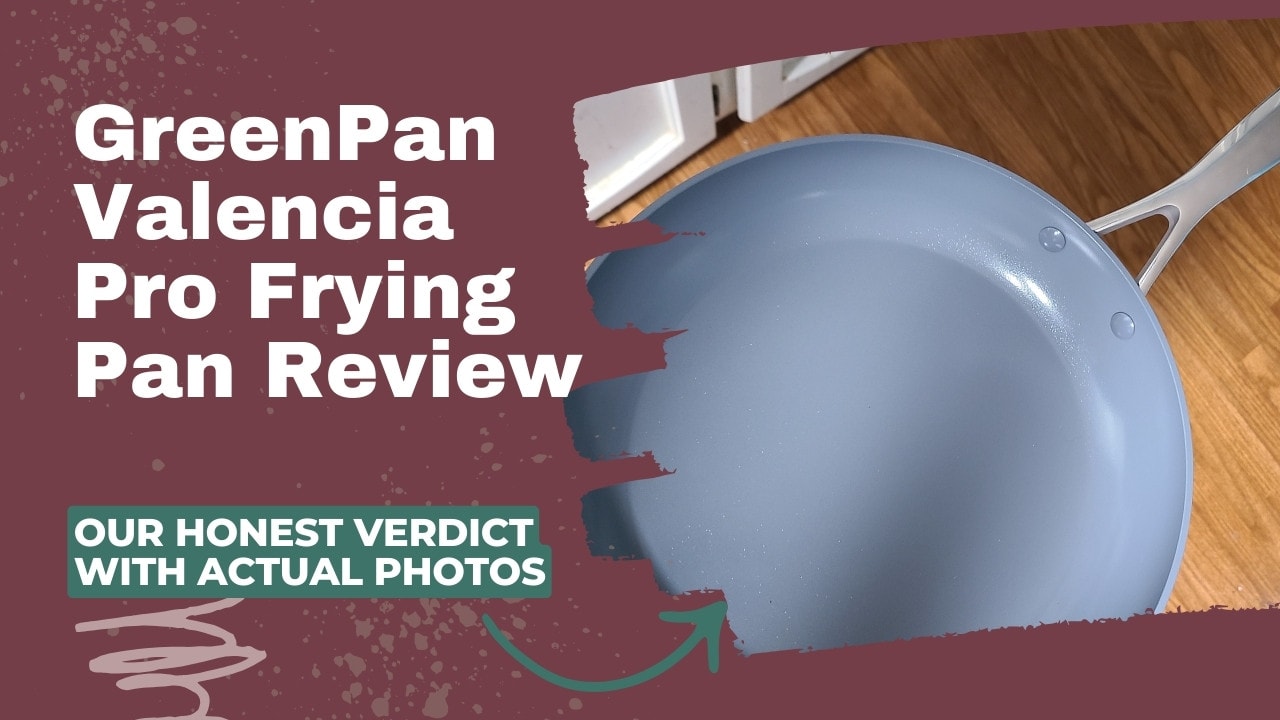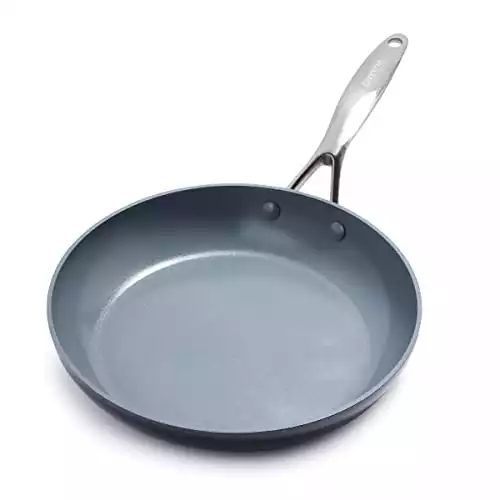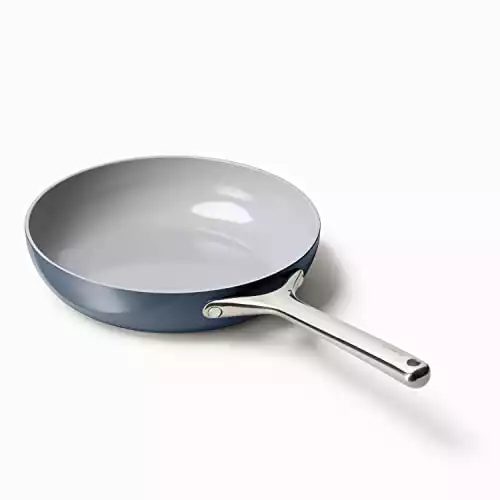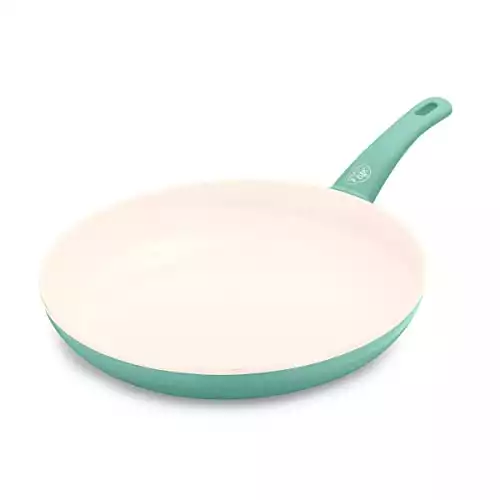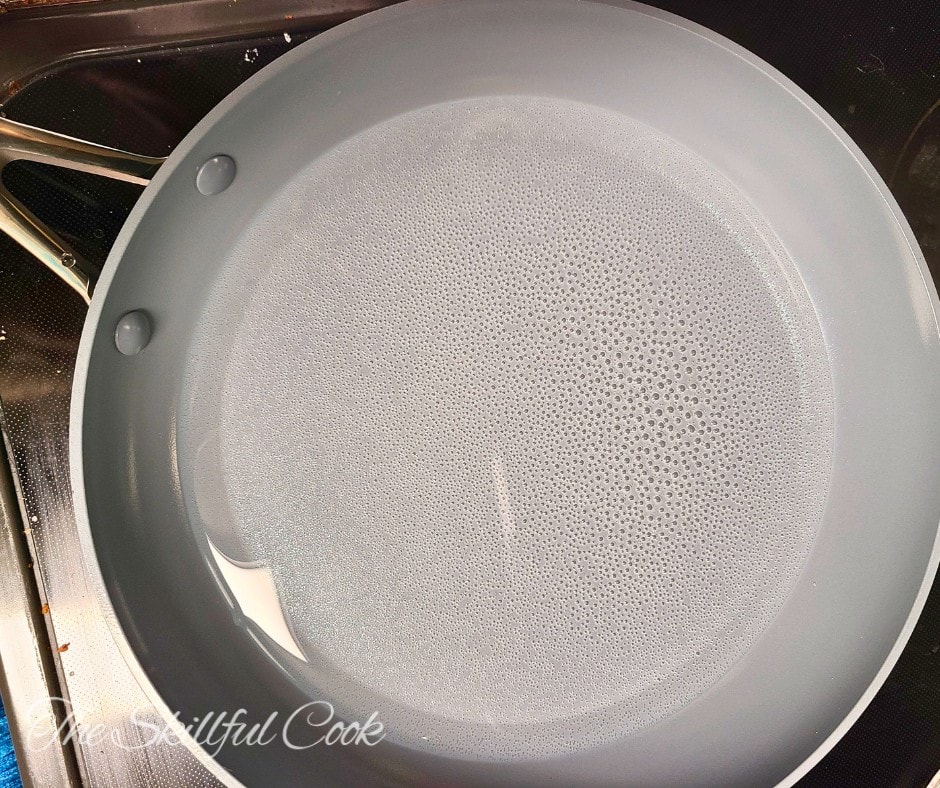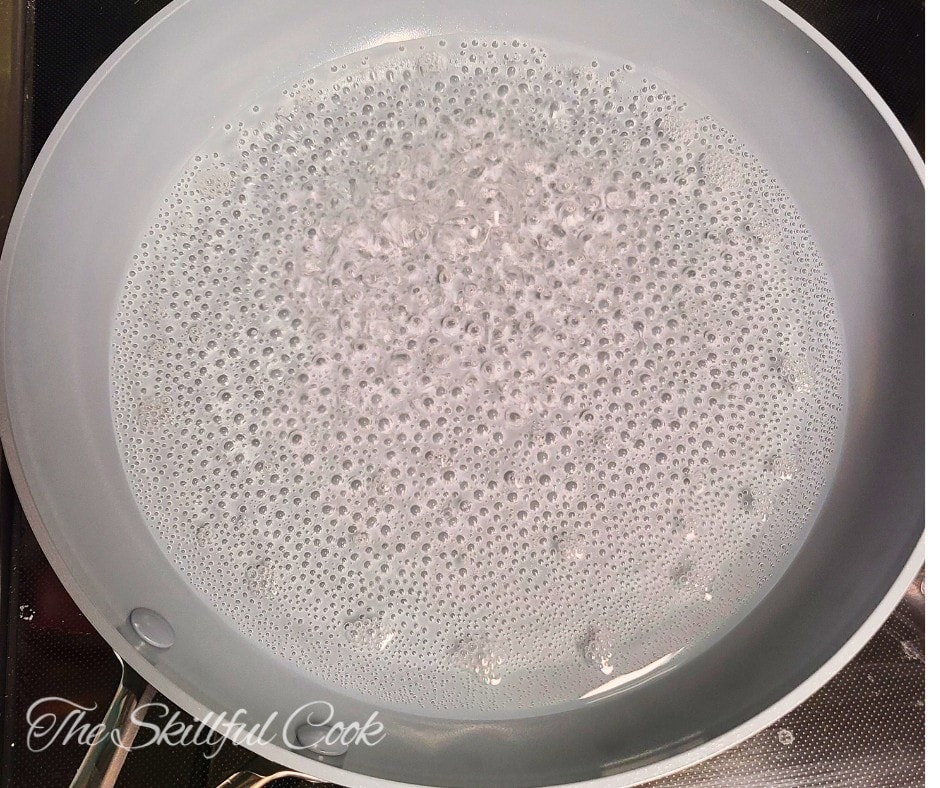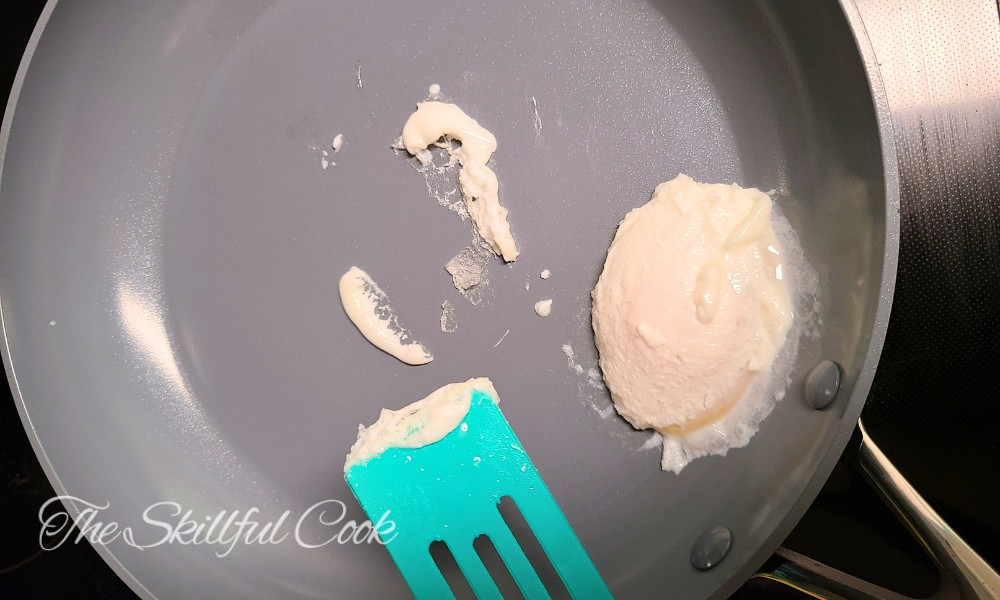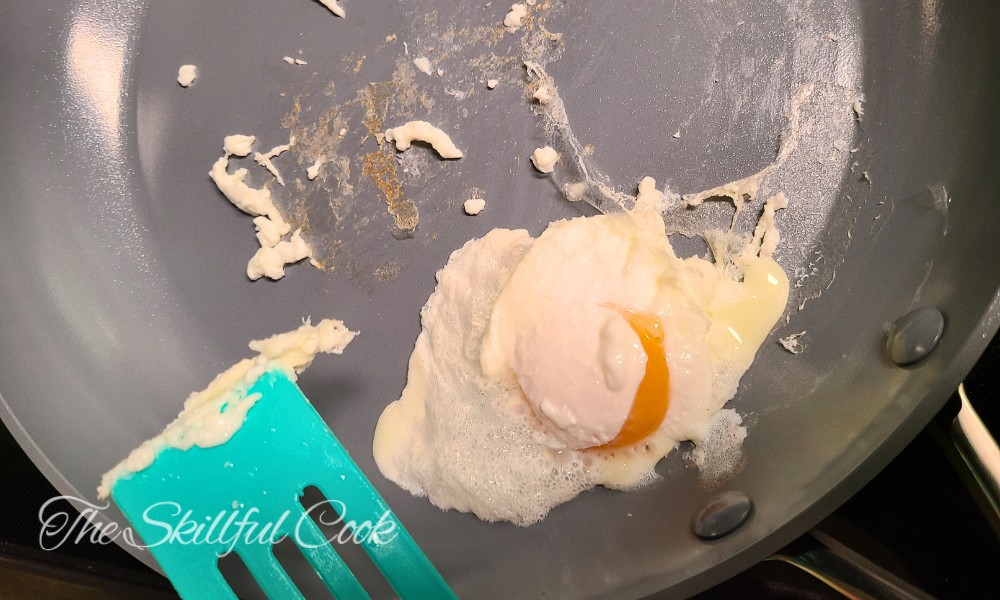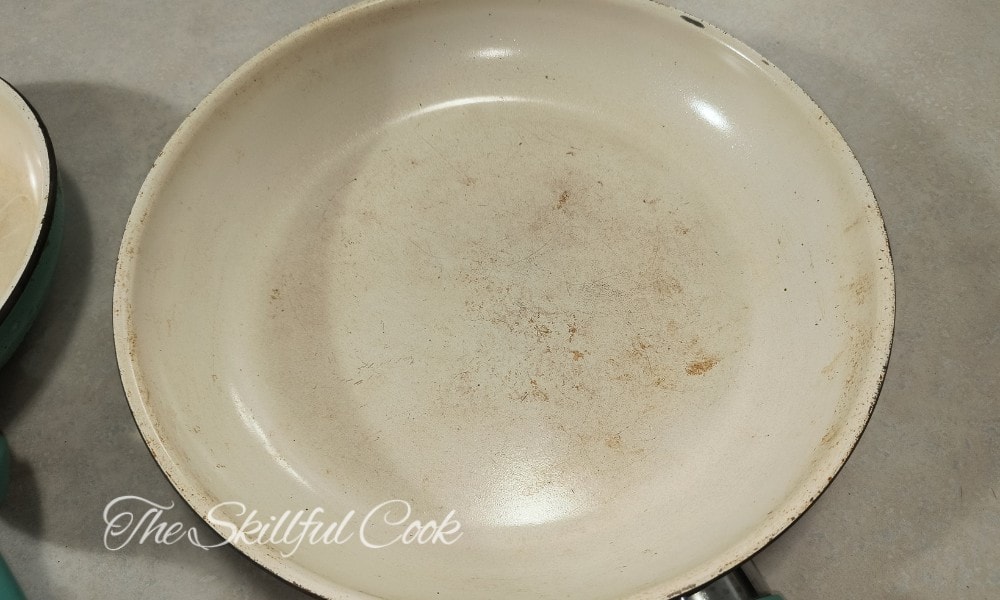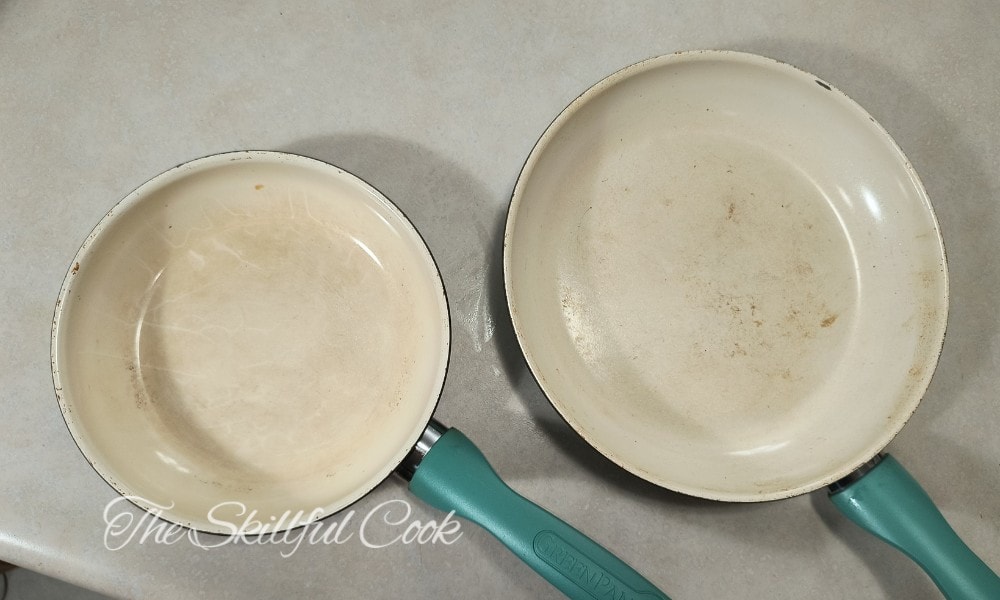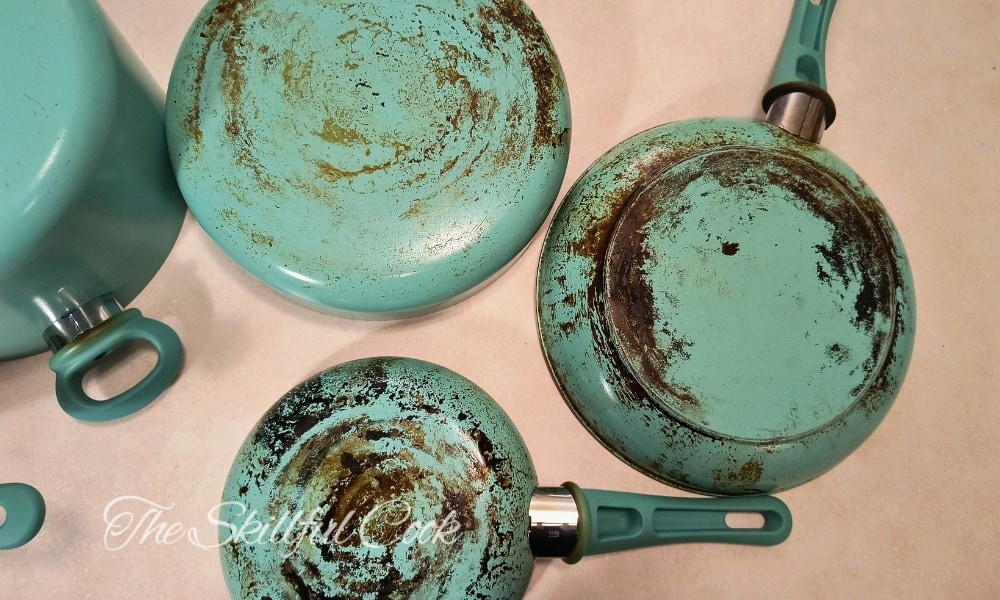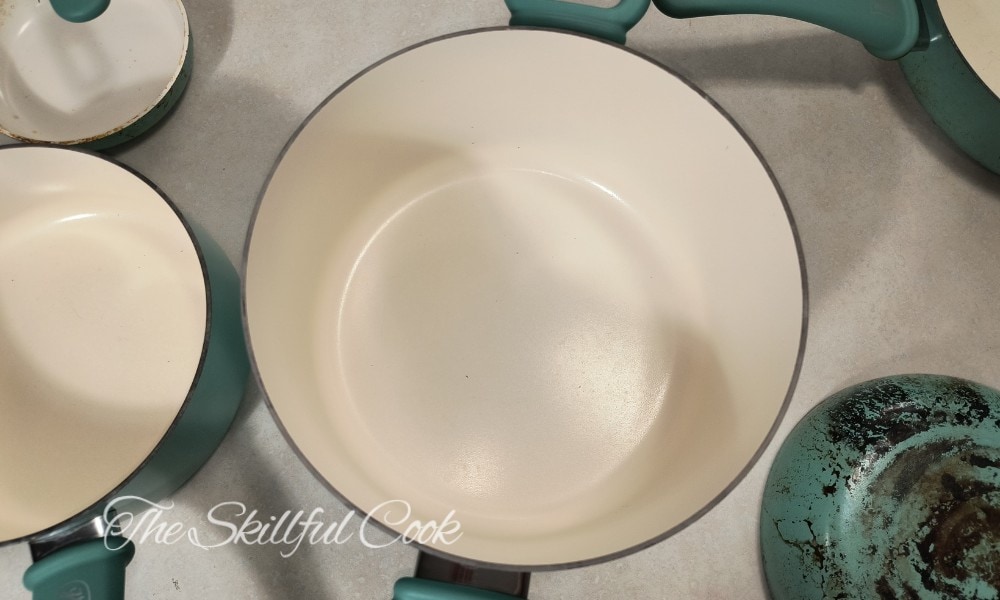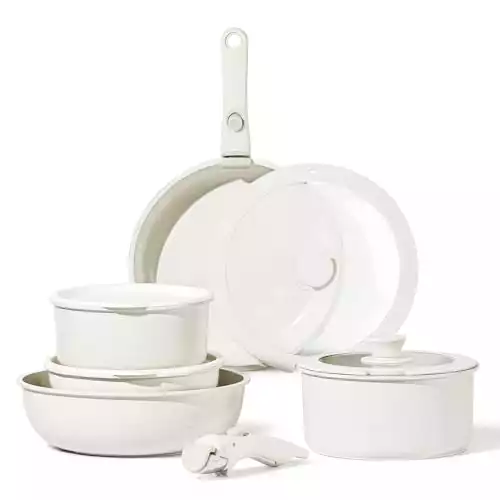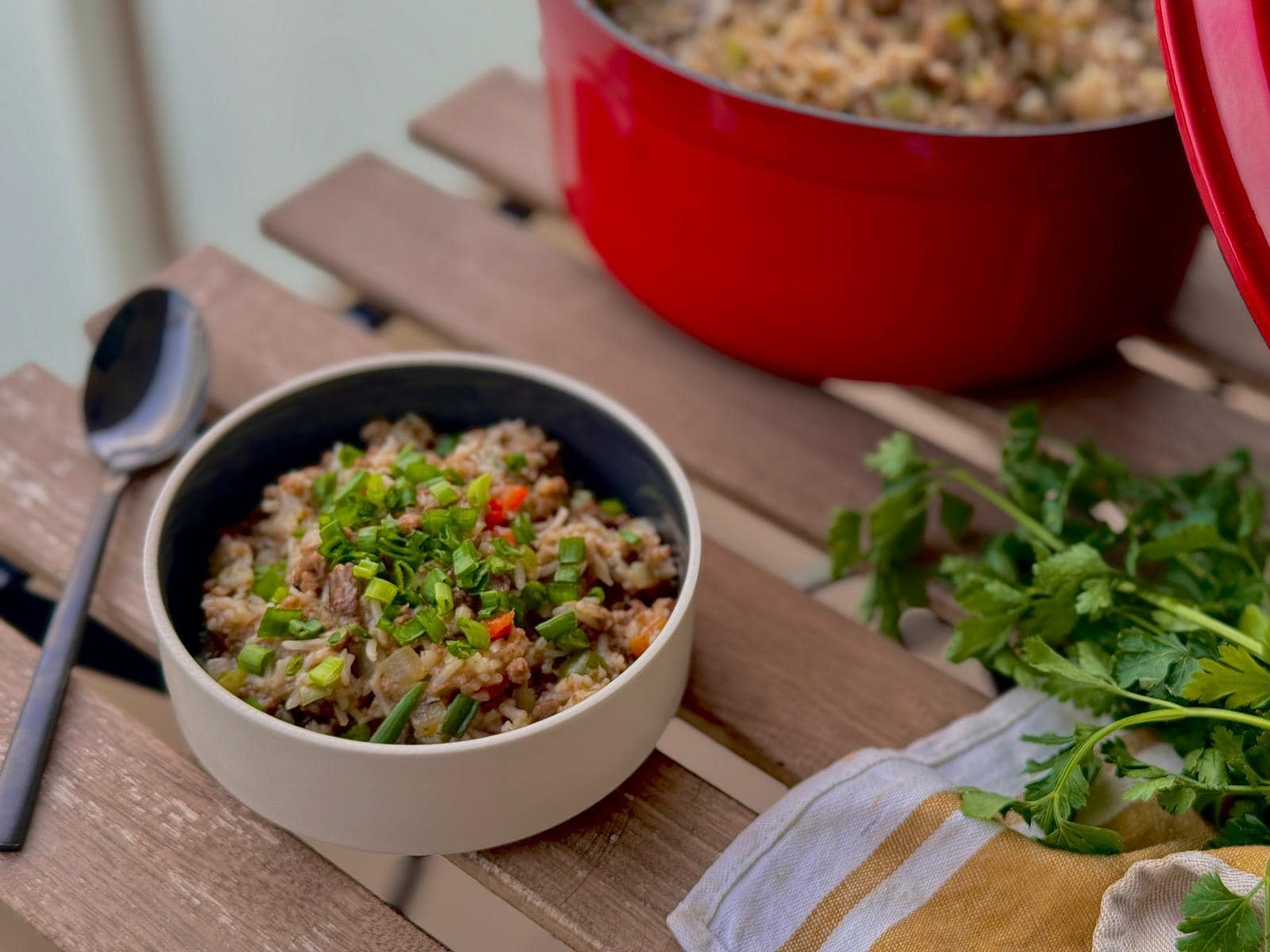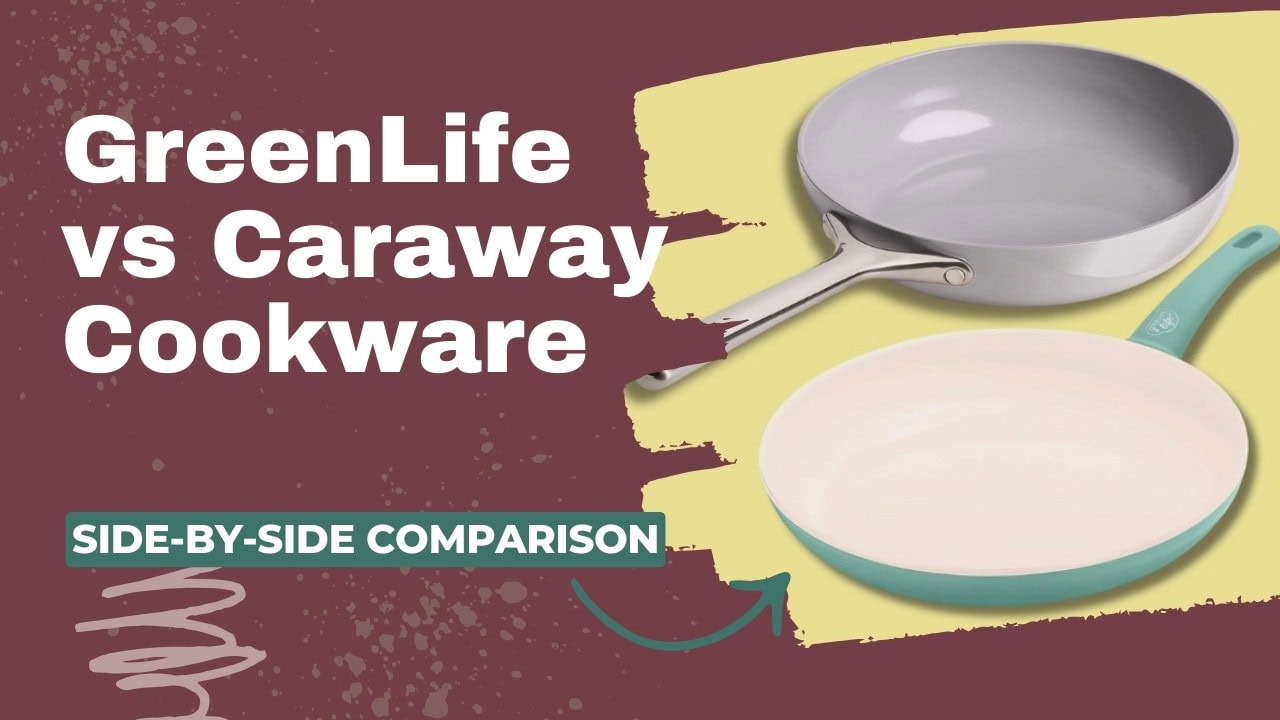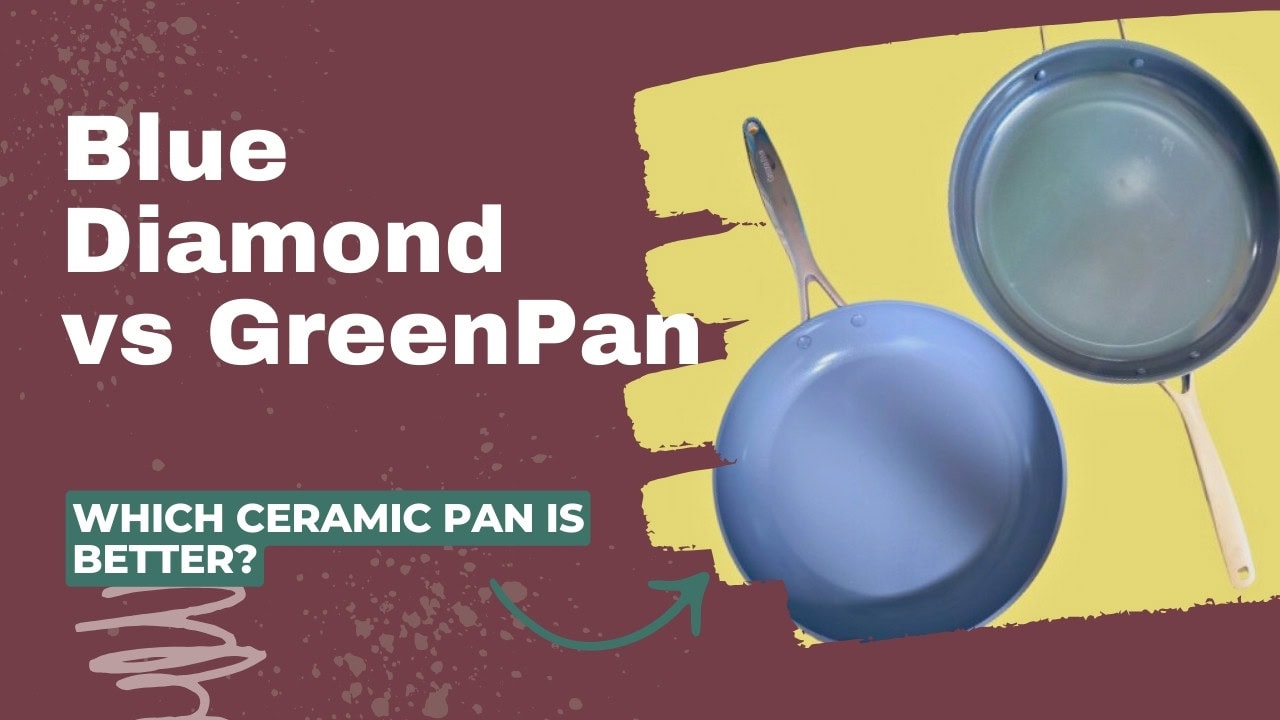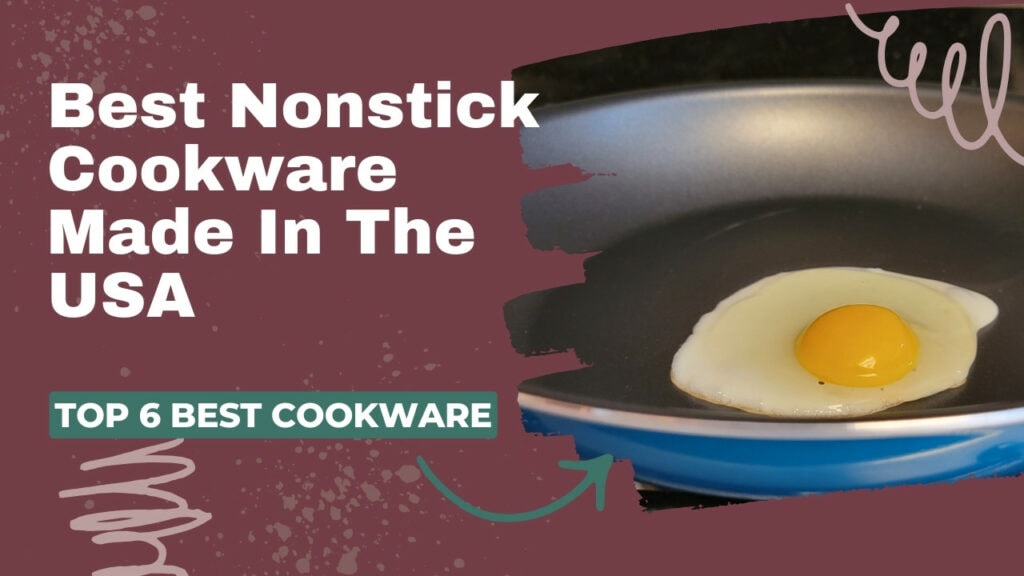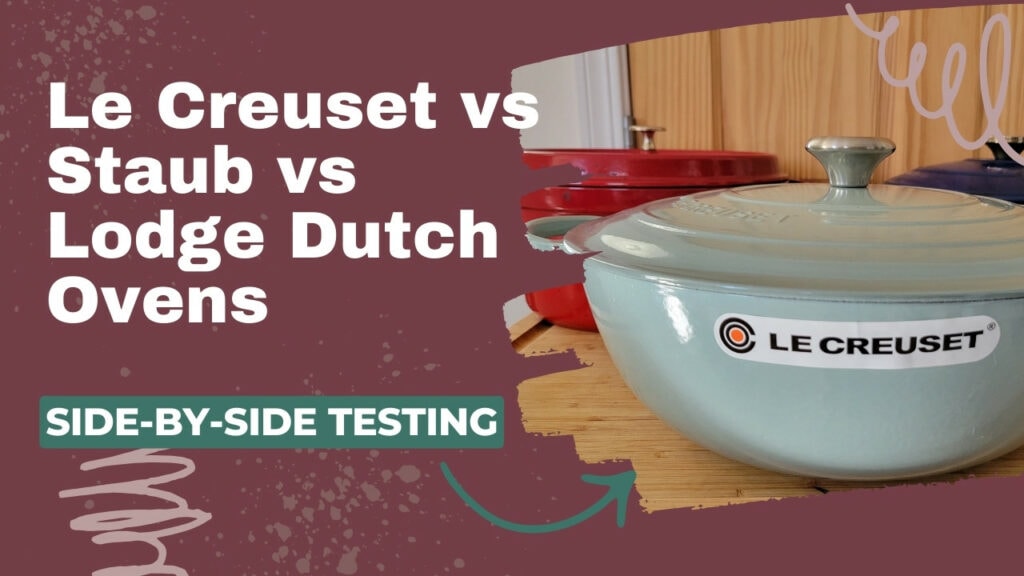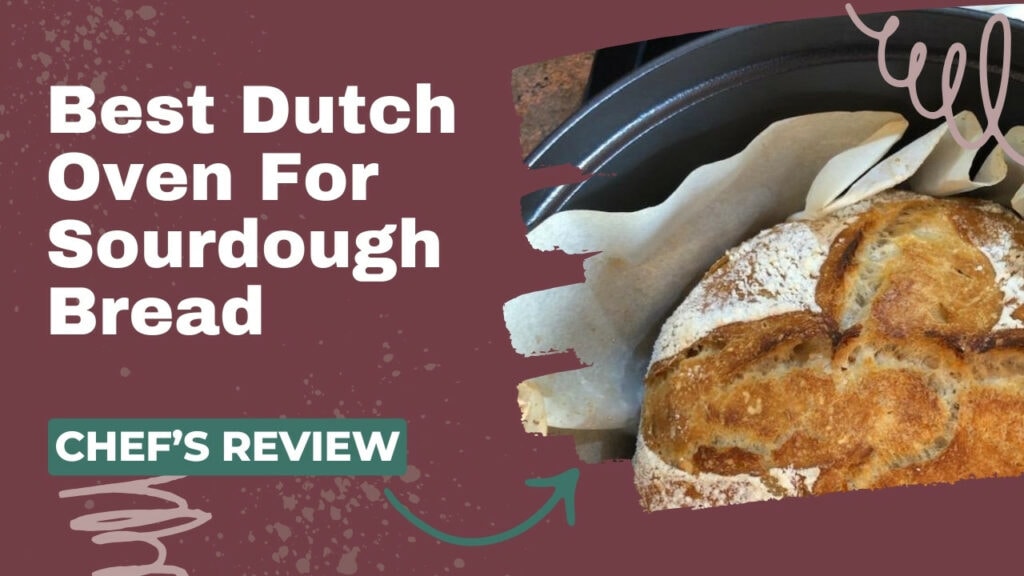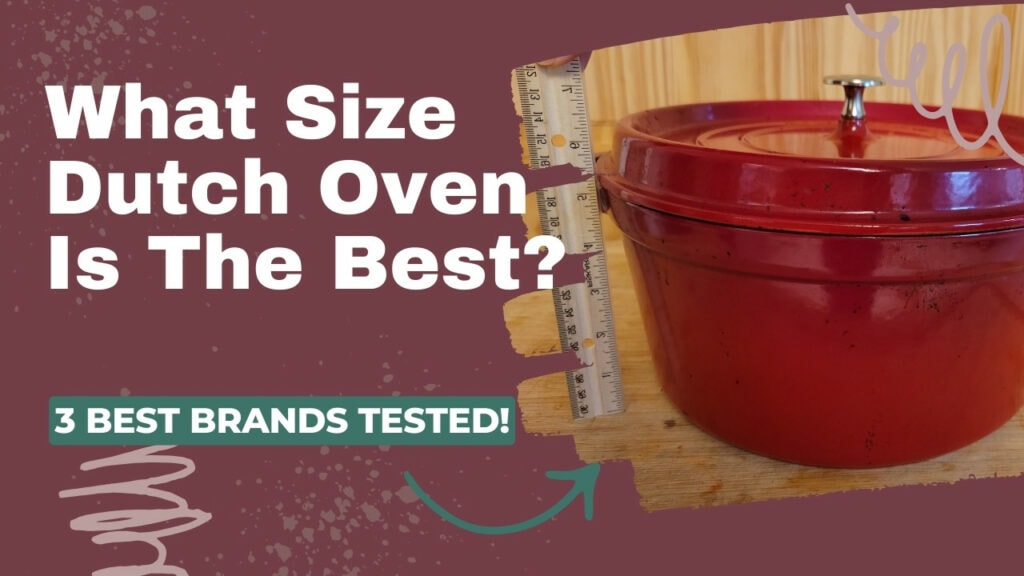Pros
Cons
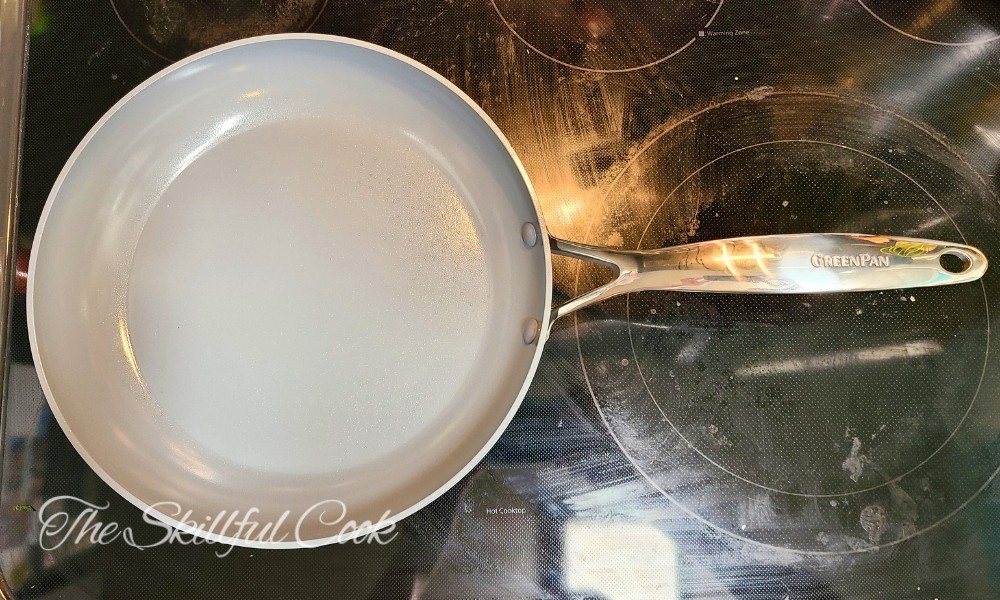
GreenPan was the original brand of ceramic nonstick cookware. Consumers were amazed to see a nonstick pan that’s made without Teflon. GreenPan soared in popularity and the company has released many variations of the product. One of its best sellers and most highly rated products is the GreenPan Valencia Pro.
GreenPan was revolutionary in the 2000s – but has it stood the test of time? To find out, I tested a GreenPan Valencia Pro 11” frying pan. It’s made of hard anodized aluminum, coated in diamond-infused” Thermolon ceramic (sol-gel). It has a stainless steel handle. And it was named “Best Ceramic Nonstick Skillet” for several years running by America’s Test Kitchen.
Side-by-Side Comparison with Other Ceramic Nonstick Pans
GreenPan Valencia Pro
Our score:
72/100
Size:
11” Frying Pan
Length:
20”
Cooking Surface:
9”
Weight:
2.24 pounds
Oven-Safe:
600°F (315°C)
Coating:
Thermolon ceramic with diamond dust
Country of Origin:
China 🇨🇳
Caraway
Our score:
78/100
Size:
10.5” Frying Pan
Length:
18”
Cooking Surface:
8”
Weight:
2.8 pounds
Oven-Safe:
550°F (287°C)
Coating:
Proprietary
ceramic
Country of Origin:
China 🇨🇳 / Vietnam 🇻🇳
GreenLife Soft Grip
Our score:
64/100
Size:
12” Frying Pan
Length:
19”
Cooking Surface:
9.5”
Weight:
2.27 pounds
Oven-Safe:
350°F (176°C)
Coating:
Thermolon
ceramic
Country of Origin:
China 🇨🇳
Cooking Performance
GreenPan is made by The Cookware Company, the manufacturer of other ceramic cookware brands like Blue Diamond and GreenLife. I’ve handled all three of these pans, which all have the same “Thermolon” ceramic base coating.
But they don’t all cook the same. The GreenLife skillet and my GreenPan Rio pans have a smoother coating that handles eggs without oil, but they start to stick after a few months. The GreenPan Valencia needs some oil or butter to be nonstick, even according to the pan’s marketing material. But, as a tradeoff, the coating should last longer.
The other major factor that affects the pan’s performance is the hard anodized pan body and its ferritic metal base. This makes the pan heavier than other pans and affects its heat transfer – but it also makes this model of GreenPan induction compatible. I’ll get into more details as I walk you through my cooking tests.
Water Test- Boiling
The first thing I do with a new pan is boil water in it to see how quickly and evenly it heats. I placed the pan on the burner and set my electric stove to 6. I added two cups of room-temperature water. After 5 minutes and 24 seconds, the water came to a full boil.
The pan didn’t heat very evenly. Despite sitting balanced on the burner, the far side of the pan began to boil more quickly than the half of the pan closest to me. After several minutes of boiling, there were still colder spots, most noticeably around the edges of the pan.
That said, as I let the pan cool, I observed that it held the heat better than thinner aluminum pans, like GreenLife or GreenPan Rio.
Takeaway: The thick “Magneto” technology base on this pan allows it to be used on induction cooktops and reduces the chance of warping. It also helps the pan hold heat longer. But this pan takes longer to heat up, and it also doesn’t heat as evenly as regular aluminum pans.
Frying An Egg
GreenPan recommends using butter or oil with this model. But I like to take any pan that calls itself “nonstick” at its word, and try cooking an egg in it dry. A Teflon pan can cook a dry egg with no problem, and we want to think ceramic can be just as good.
Besides, the amazing cooks at America’s Test Kitchen claimed they cooked 50 eggs in this pan with no oil, and the eggs released every single time! (See the video below.)
Well, I must have done something wrong.
I turned the electric stove top to a setting of 4 and let the pan heat up with no oil. I cracked my egg into the pan and it almost immediately turned the egg white! It was gorgeous, it looked like a cartoon egg. But it wouldn’t take long for my delight to turn to horror.
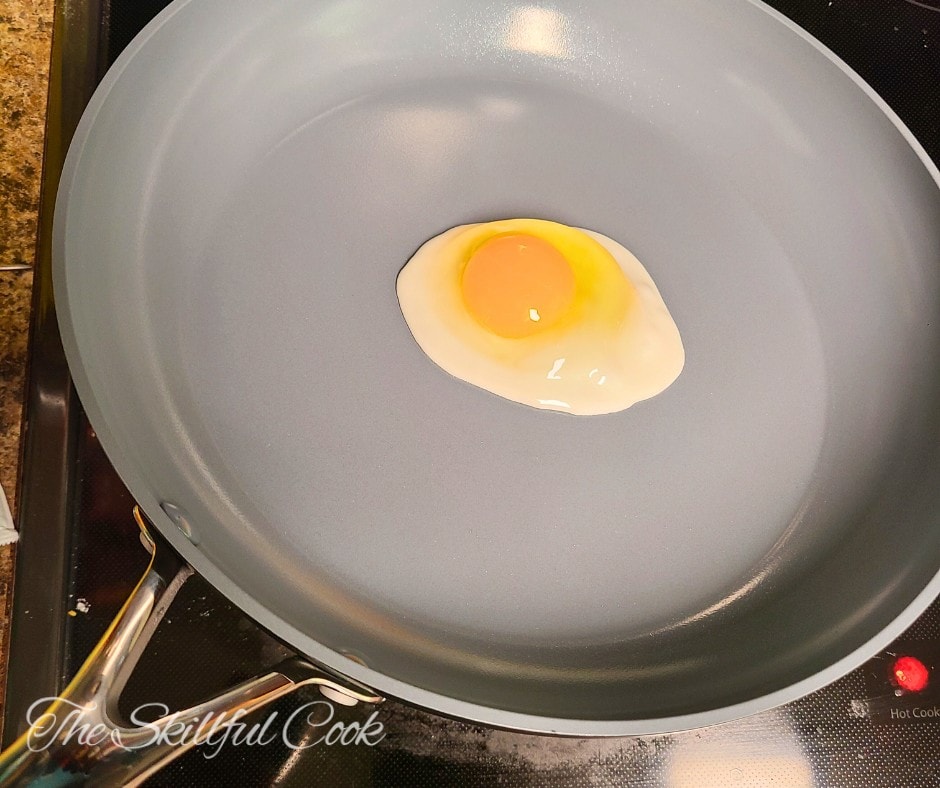
I lifted the pan and the egg did not move. I used my small spatula to try to flip it and realized the egg had stuck horribly to the pan. I managed to scrape up some of the egg and flipped it. The egg continued to stick, and ultimately I had to turn my fried egg into chopped egg bits.
The second time I tried cooking an egg in this pan with no oil, it fared better. I didn’t let the pan preheat as long. If you want to get slippery-slidey eggs with no oil in this pan, you’ll need to watch its temperature very carefully. A pan that’s too hot and a pan that’s too cold can both result in sticky eggs.
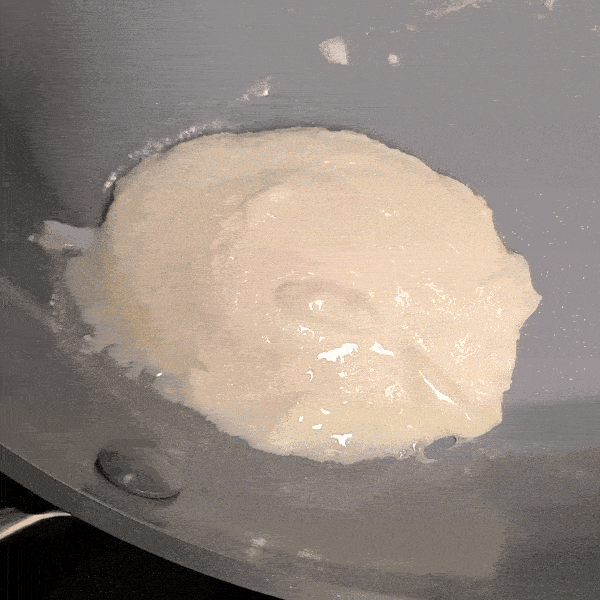
It’s easiest on yourself and the pan to just use a bit of butter.
Pancakes
The instructions that come with the GreenPan Valencia Pro warn not to go above medium heat with this pan. Unlike the PTFE (plastic) coating on traditional nonstick pans, a ceramic coating conducts heat, making ceramic pans run a little hotter than Teflon pans.
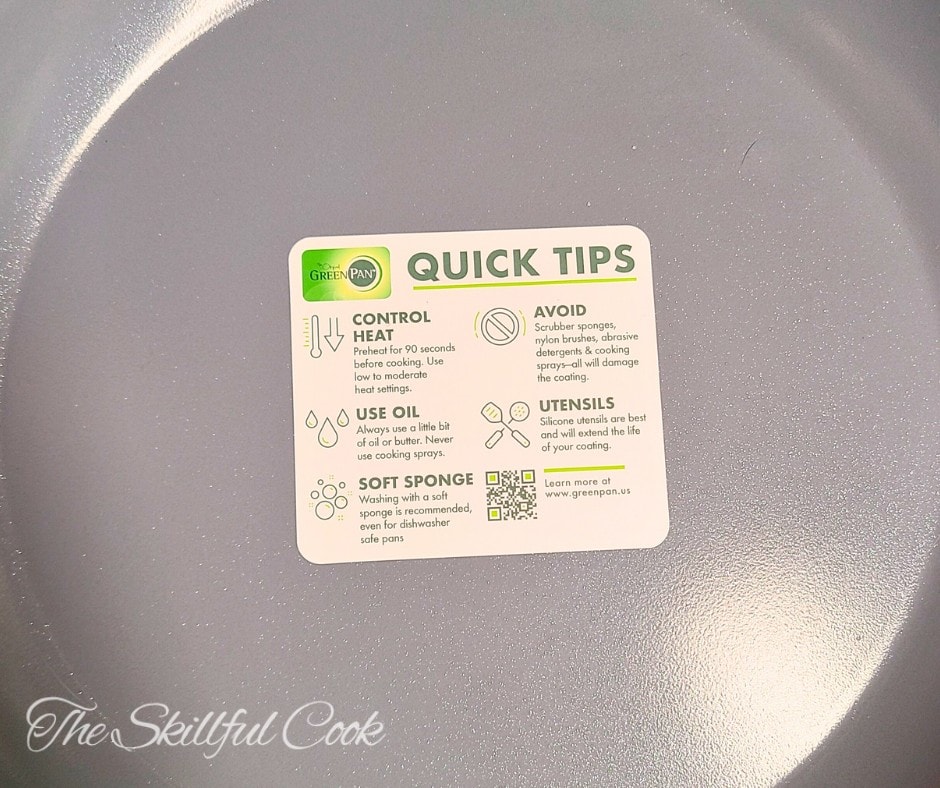
A fluffy pancake batter gives you a chance to see that in action. At just the right heat setting, the GreenPan Valencia released pancakes wonderfully with little to no oil. But it didn’t stay a consistent temperature, or adjust quickly when I raised or lowered the stove temp.
Cooking Chicken
To test how it cooked proteins, I placed the GreenPan Valencia Pro on the burner and turned the temperature to 6. I placed a piece of chicken breast in it, with no oil at first, to see what would happen.
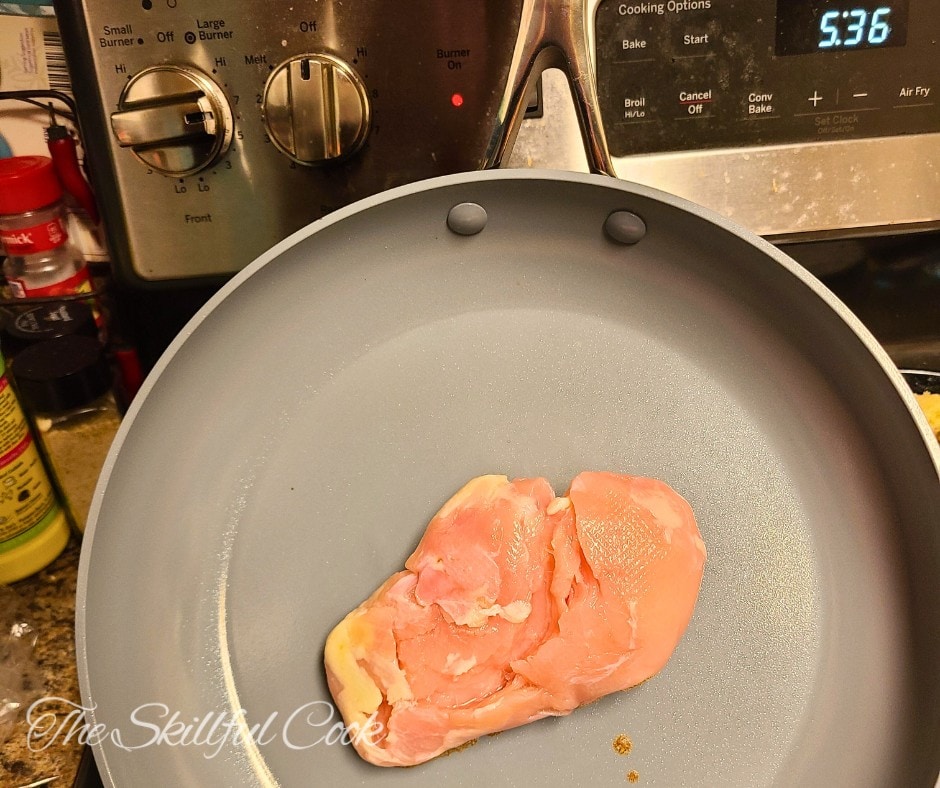
After 3 minutes, the chicken appeared stuck to the pan, but it released very easily when I tried to flip it! It left a few marks, but not a layer of meat stuck behind.
The final sear was a bit uneven, but this pan did way better than cheaper ceramic skillets, which tend to steam the meat more than sear it. Cleanup was very easy.
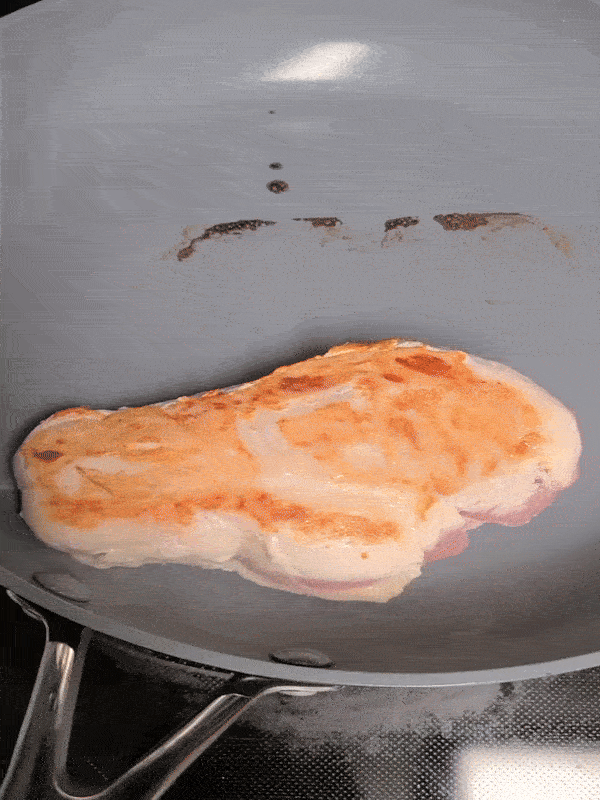
Metal Utensil Use
GreenPan advertises the Valencia Pro as being metal-utensil safe, so I used a stainless spatula in my chicken and pancake tests. I’m happy to report that, so far, there have been no signs of chips or scratches. However, to extend the life of your pan I would highly recommend avoiding metal altogether.
Build Quality
GreenPan claims that all of its aluminum cookware vessels are made of a minimum of 65% recycled aluminum. The Valencia Pro is coated in a sprayed-on-and-cured “Thermolon” sol-gel coating “infused with diamonds.” But you’re not going to find half-carat diamonds peeking out from your cookware. Instead, you’ll notice a textured surface on the inside of the pan. This is supposed to help keep the ceramic coating from scratching while maintaining its nonstick properties.
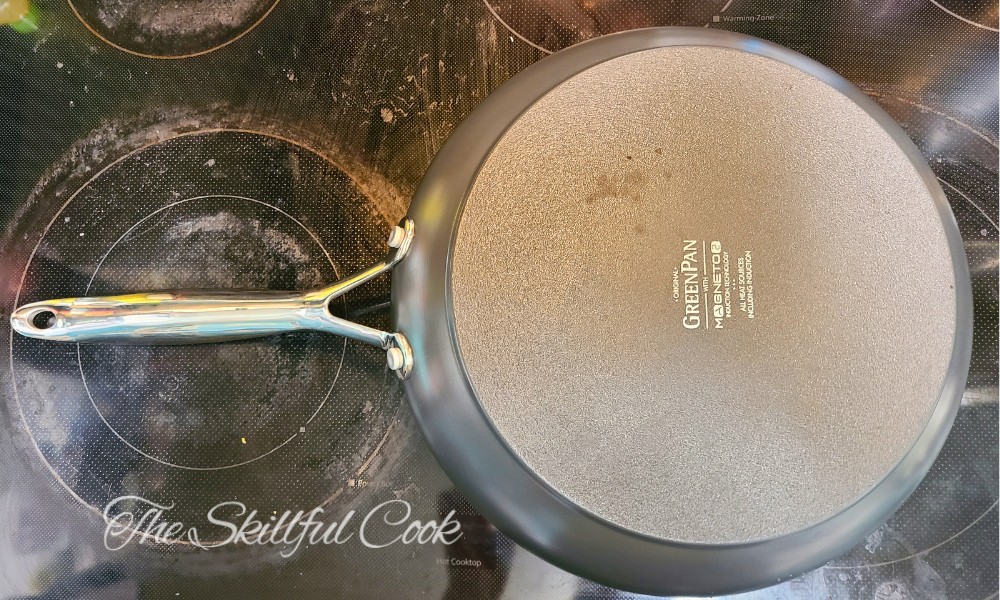
The Valencia Pro is made of hard anodized aluminum, which means the metal has been electrochemically treated to become harder and more warp-resistant. It has two metal rivets connecting the stainless steel handle to the pan base. The base is solid and balances the pan well. It is not a pan that is going to tip over with a slight bump. As someone with a young child often underfoot in the kitchen, this is comforting.
Design and Comfort
This pan looks like a high-end model. The gray interior helps hide stains. But, compared to pans with a white interior, it also makes it harder to see if there’s a slight layer of polymerized oil that could be gumming up the nonstick coating.
It does not come in the assortment of decorative colors that you can find in other ceramic nonstick pans.
The stainless steel handle did not get hot when I used the pan on medium. The handle is long and thin, not padded in any way, and not particularly comfortable.
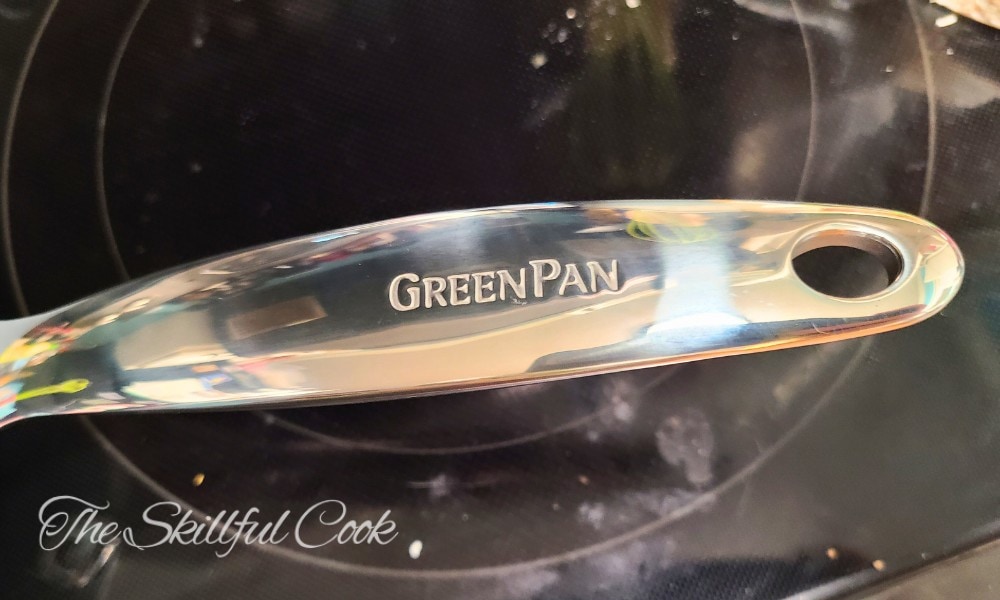
I do wish this pan had a helper handle. The pan isn’t huge, but it feels heavier than it’s 2 pounds 4 ounces, even empty.
The bottom of the pan has a rough texture, meaning it doesn’t slip easily along the stove or counter. I like that, especially as I tend to do a dozen things in the kitchen while cooking. I don’t want to bump the pan handle and send it flying across the stove. It wasn’t so rough that it scratched my flat electric stove.
Versatility
Among ceramic skillets, the GreenPan Valencia Pro is a versatile pan. It can be used with every type of stove, including induction. The sides of this pan are high enough to contain a fair amount of chili or chopped veggies, but not so high that it makes it hard to flip food in it.
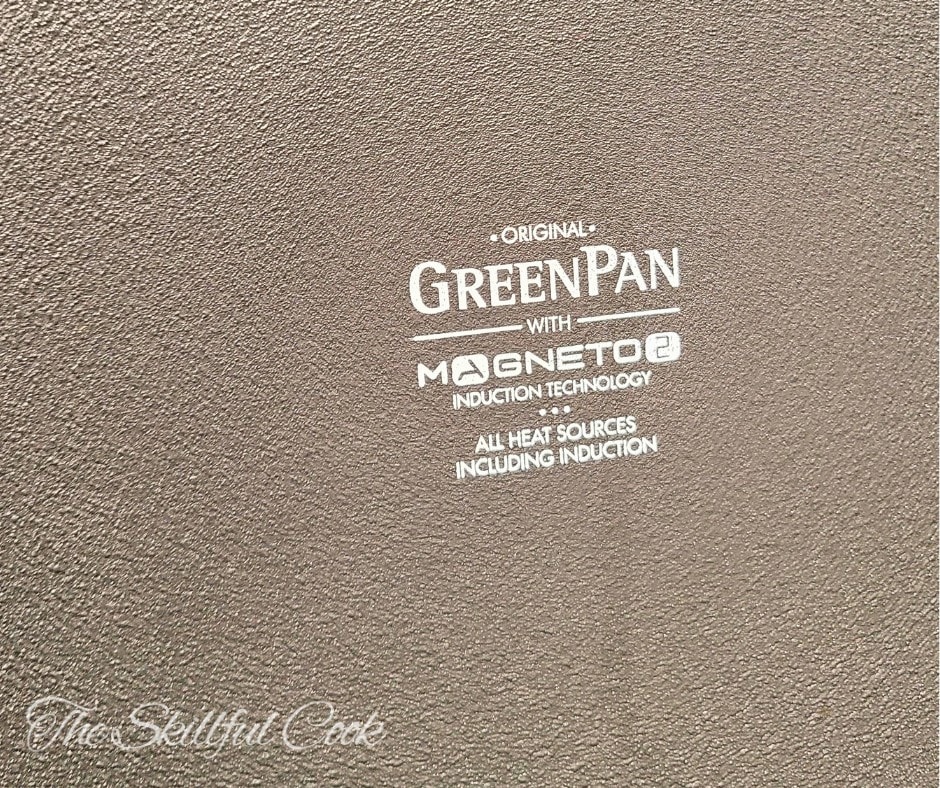
I love that this pan is oven and broiler-safe to 600°F (315°C). That gives me the option to use this pan for “one-pot meals”, meaning I can take it from the stovetop to the oven to finish cooking. This is a much higher heat tolerance than other ceramic pans, especially those with Bakelite handles.
Ease of Use and Maintenance
It will take some fiddling to find just the right temperature for cooking food in this pan on your specific stove. But once you have that down, cooking in it is very simple. You just have to heat the pan, add a little fat or oil, and begin cooking.
GreenPan advertises that this model is dishwasher and metal utensil-safe. But then they recommend hand washing it and only using silicone utensils. The convenience of using a dishwasher vs. having your pan last longer is your choice. But this pan cleans up so easily that there’s little reason to use a dishwasher.
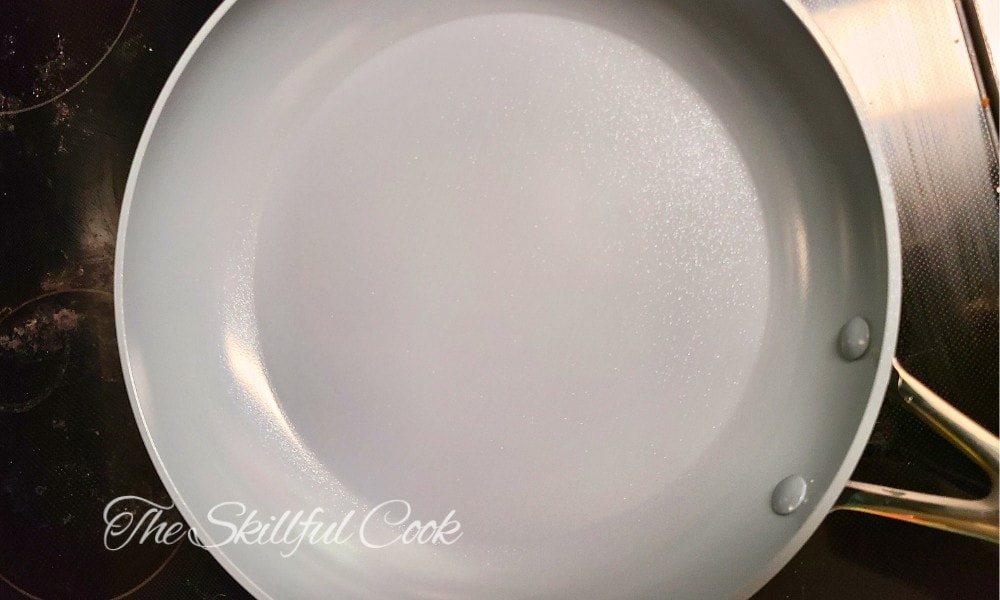
After the stuck egg fiasco, I was dreading scrubbing this pan. But amazingly, it cleaned up extremely easily. I simply used a little dish soap and a soft dishcloth and it wiped clean. I did use a slight bit of extra pressure when washing the pan from cooking the chicken, but it was an A+ cleaning experience for me.
Watch Out for Polymerized Oil
There are two main reasons food starts to stick to ceramic nonstick pans. One is impossible to fix, but the other is easy. If the coating starts to develop micro-cracks from expanding and contracting on high heat, there’s nothing you can do about that.
But if food is sticking because there’s a gummy layer of oil stuck onto your pan, this is relatively simple to remove with warm water and baking soda or a magic eraser sponge. Make sure to keep up with cleaning it to avoid baking the layer on even further, making it harder to remove. And, whatever you do, avoid scrubbing with abrasive sponges to remove the oil. That will damage the coating.
The higher temperature tolerance of the GreenPan Valencia Pro seems to predispose it to this problem. To avoid it, use a high smoke point oil with your ceramic pan, such as canola, avocado, or peanut oil.
Longevity and Warranty
One of the biggest downsides to ceramic cookware is its short lifespan. Even with gentle care, you’re going to have to replace this pan in 2 or 3 years max. I like to tell people ceramic pans are “the fast fashion” of the cookware world. They look good and you enjoy them for a little while, but it won’t be long until you’ll have to replace them.
That said, the GreenPan Valencia Pro is likely to fall on the longer-lasting side of the ceramic cookware spectrum. The hard anodized pan body and stainless steel handle of this pan could last forever, and they offer some protection to the ceramic coating.
The photos below show GreenPan Rio pans which have been my sister’s main cookware for 16 months now. You can see some wear and tear, but they are still functional. We’ll see how the Valencia Pro holds up in comparison.
Does GreenPan Have a Warranty?
GreenPan offers a limited warranty, but it isn’t very useful. While it claims the Thermolon coating has a 2-year warranty (the rest of the pan has a limited lifetime warranty), consumers have had trouble getting GreenPan to honor the warranty.
Customers have mentioned when buying from a third party (ie Target), the merchandiser will not offer refunds on GreenPan, even within the store’s normal return period.
Price and Availability
The GreenPan Valencia Pro is a high-end competitor in the ceramic cookware space, costing three times as much as cheaper GreenPan options like the Rio. It's comparable in price, quality and life expectancy to Caraway.
The pan is widely available from retailers such as Kohl’s, Walmart, and Target, as well as Amazon. They are a little harder to find in-store than cheaper GreenPan models. They are also available on the GreenPan website.
Health and Safety Considerations
Like most ceramic pan brands, GreenPan leads its marketing campaign with claims about its products’ safety over traditional nonstick pans.
So are ceramic pans safe? It’s true that sol-gel ceramic coatings don’t contain the forever chemicals that Teflon does. A very different technology than traditional ceramic, sol-gel ceramic is fairly new, so we don’t really know if there are any long-term potential concerns. With more time and more research, experts will be better able to understand long-term safety implications.
Check out our comprehensive guide to ceramic cookware safety if you’d like more information.
GreenPan specifically states this pan is “free of PFAS, PFOA, lead, and cadmium” – but that doesn’t make it unique among ceramic cookware. GreenPan says the food surface of their pans is California Prop 65 compliant, but lists chemicals that “may be present in substrate layers.”
Company and Environmental Impact
GreenPan is made by The Cookware Company, the same manufacturer that makes GreenLife, GreenChef, and Blue Diamond – as well as other, more general brands like Merten & Storck. The company’s primary headquarters are in Belgium, but GreenPan products are all made in China.
Since no ceramic pan is expected to last more than a few years, the Cookware Company is producing products that will end up in a landfill at an alarming rate. GreenPan does have a recycling program, but, unfortunately, they charge $20 to cover shipping and handling. That’s almost a third of the price of the pan. I imagine many consumers won’t find the high cost worth the effort.
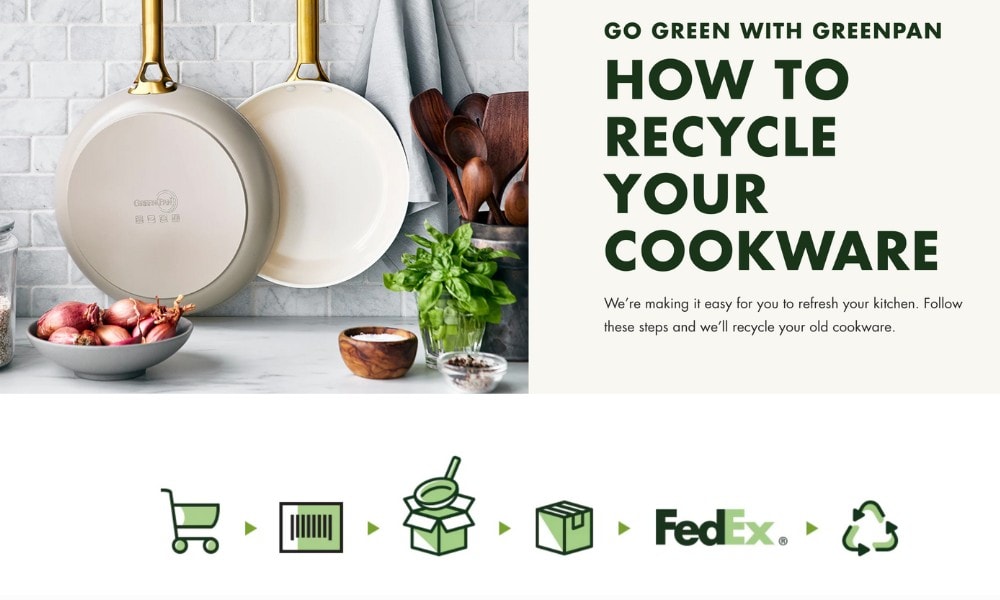
According to the website and Amazon listing, all GreenPan’s aluminum cookware pieces are made of “at least 65% recycled aluminum”, excluding the handles. But I would love to see third-party verification of the claims it makes. For instance, it claims the Thermolon coating produces 60% less carbon dioxide during the curing phase than competitors, but does not go on to name a competitor or produce documentation of this claim.
You may have heard about the 2019 class-action lawsuit that was filed against The Cookware Company. The lawsuit alleged that its GreenPans were advertised as toxin-free, but contain compounds known to be toxic in their Thermolon coating. This lawsuit was ultimately dismissed with no “admission of wrongdoing” by GreenPan and no finding of liability.
Takeaway: GreenPan products are probably safe to cook on, but I wouldn’t say GreenPan is good for the environment. A cast iron or carbon steel pan that will last generations will have a much lower carbon footprint than any ceramic-coated cookware.
What Else Do People Say About It?
The GreenPan Valencia Pro gets good reviews on Amazon, with over 2500 reviews and a 4.4-star rating at the time of writing. Nearly all consumers love how this pan looks. They say it heats quickly and the handle stays cool. Most of the concerns with the pan center around the nonstick coating.
It seems that several reviewers purchased the pan based on the America’s Test Kitchen report that it could cook 50 eggs without oil – and were sorely disappointed. I discovered in my own tests that it needed oil or butter to really be nonstick, at least for fried eggs.
A fair number of reviews also mention that within just a few months the non-stick coating wore down, but they are still able to use the pan as long as they add cooking fat.
Alternatives to Consider
There are a ton of nonstick pans and cookware sets on the market. One of my favorites is CAROTE cookware, with removable handles. Available in a small set, it’s a solid bit of cookware at an affordable price.
CAROTE is a lightweight and affordable set of ceramic nonstick pots and pans. These stackable pots and pans have removable handles and are excellent space-savers. CAROTE is only to be used at medium or lower heat, but cooks evenly and looks great doing it.
We also have a list of the best ceramic cookware that is made in the USA, which offers several excellent alternatives. Keep in mind it is hard for American-made products to match the budget offerings mass-produced in China, so the price will be higher for these pieces of cookware.
If you’ve decided that ceramic cookware isn’t for you after all, I highly recommend investing the time in learning to use a good-quality carbon steel skillet, like Misen.
Final Takeaway
The GreenPan Valencia doesn’t shine as an egg pan, since you (or most people!) need to use oil for it to be very nonstick.
Despite that, I have to say I like this pan. It feels well-built. It will hold up better than cheaper models for everyday use, especially if you’re okay with using fat to cook. My sister-in-law loves her GreenPans so much that she recently bought a new set to replace hers that was several years old.
I love how easy it is to clean this pan by hand. It’s not the cheapest pan out there, but I find it more pleasant to use than some of the bargain non-stick skillets I’ve used.

